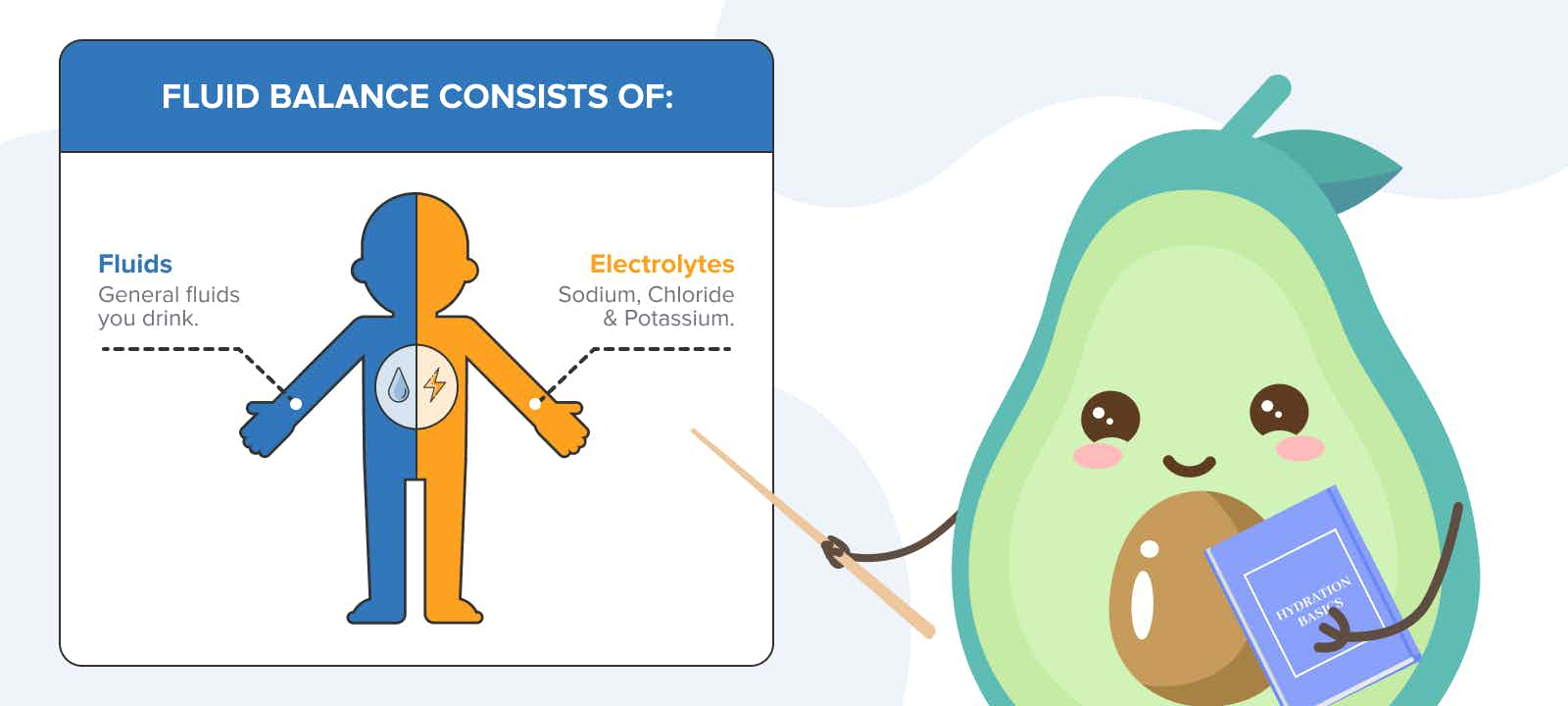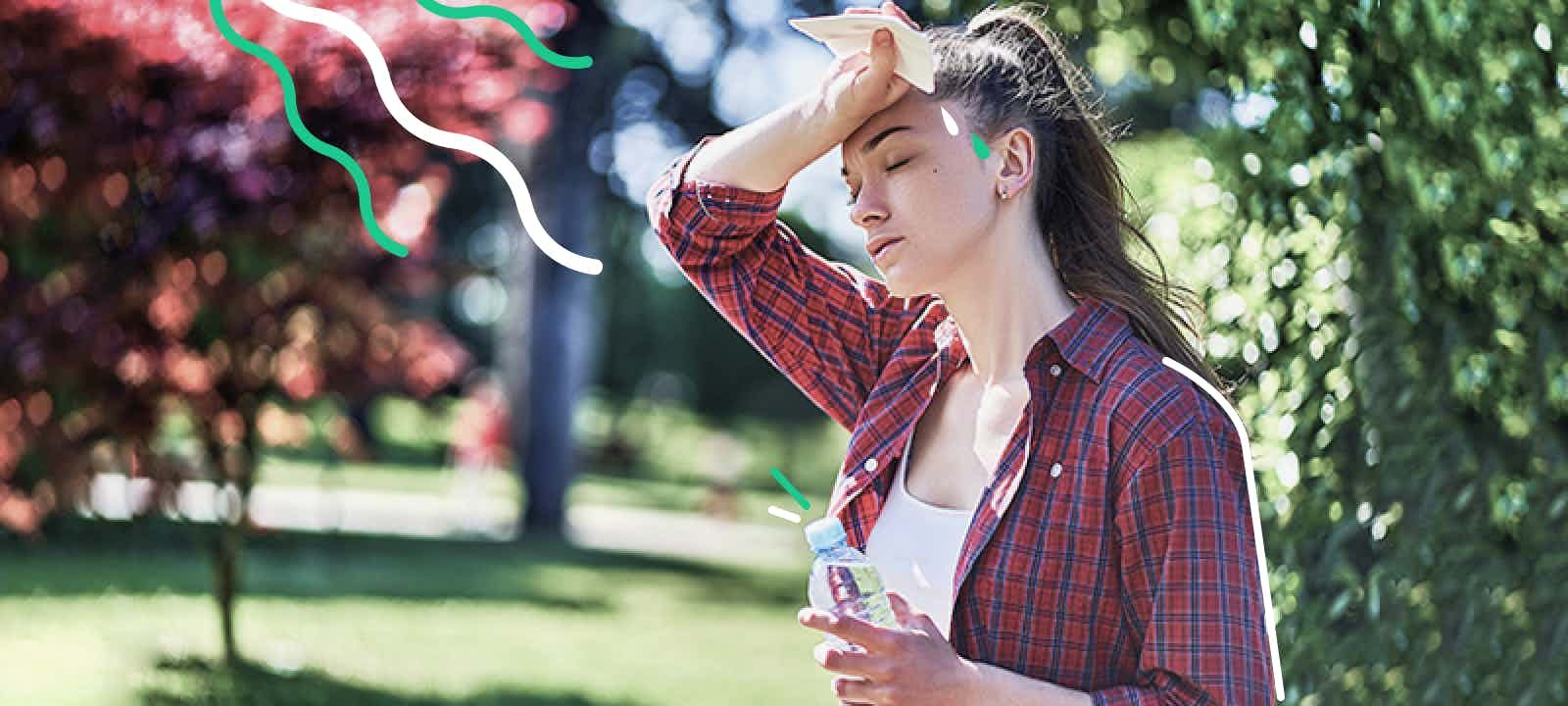Water Intake in Keto Diet
Dehydration is a potential cause of Keto flu. Because of this, many sources recommend aggressively swilling water on Keto to prevent the headaches, cramps, fatigue, and malaise linked to low-carb dieting.
But while Keto does increase hydration needs, drinking more water isn't necessarily the answer. In fact, drinking too much sodium-free water on Keto can exacerbate Keto flu.
Why? Because over-hydrating dilutes blood sodium levels, bringing with it—yes—the dreaded symptoms of Keto flu.
Don't worry, you'll learn a simple, practical Keto hydration strategy in a minute. First, though, let's lay some groundwork.
Hydration is defined as the "process of providing adequate liquid to bodily tissues".[*]
Adequate is the operative term. Not too much liquid. Not too little liquid. We'll return to this point later.
We provide liquid to our bodily tissues because water is essential for life. Everything from blood flow to skin health to toxin disposal depends on H2O.[*] Our bodies, you might be aware, are about 60% water weight.
The equilibrium of water in your body is called fluid balance, and the fluids you drink are just one input into that system. The other main inputs are sodium, chloride, and potassium—electrolytes that regulate fluid levels inside and outside of cells.[*]

Even if you don't get the inputs 100% correct, your body is an excellent fluid balancing machine. Along with your kidneys, a slew of hormones like insulin, aldosterone, renin, angiotensin, and antidiuretic hormone (ADH) make sure fluid levels stay just right. An example will help illustrate.
Let's say you're low on fluids after a long hike. Below the threshold of conscious awareness, osmoreceptors in your brain sense a decrease in blood volume and tell a brain structure called the hypothalamus to secrete ADH. ADH then tells your kidneys to stop losing liquids through urine.[*]
At the same time, the hypothalamus triggers your thirst mechanism. Then you get thirsty, drink something, and fluid balance is restored.
This is how hydration works on Keto (or any diet), but let's explore what's different on Keto.
Eating a Keto diet means keeping carbohydrate intake very low. And when you keep carb intake very low, the hormone insulin—your blood sugar boss—also stays low.
With insulin low, your liver is encouraged to start burning fat and making ketones. That's how you enter the unique fat-burning state called ketosis.
Low insulin has other effects though. Along with increasing fat-burning, low insulin also increases water, sodium, and potassium loss through urine.[*]
In other words, a Keto diet raises both fluid and electrolytes needs.
What about the water weight you lose in the early stages of Keto dieting? Doesn't that dehydrate you?
This is a common point of confusion. Let's clear it up.
Early water losses on Keto are largely driven by the depletion of glycogen—or stored glucose—from muscle and liver cells. This glucose is needed for energy as the body transitions to using fat for fuel.[*] Since glycogen is mostly water weight, using it up releases a deluge of H2O.
But here's the thing. On Keto, you adapt to lower glycogen levels, so this water doesn't need to be replaced.
The release of glycogen has an over-hydrating effect—it causes too much water to be released into circulation.[*] That's why your body pees it out. It's smart like that.

Much Keto advice is centered around preventing dehydration, defined as net water loss from the body. The claim is that drinking more water will prevent the symptoms of dehydration—cramps, fatigue, headaches—often called Keto flu.
This brand of hydration advice has roots in the 1940s. That's when the Food and Nutrition Board of the National Academy of Sciences recommended that adults drink 84 ounces of water per day.[*] This recommendation has since mutated into the 8x8 rule, which commands us to drink eight ounces of water eight times per day regardless of thirst.
The 8x8 rule is widely accepted, but does any science suggest it promotes better health? No there isn't, according to a meticulous review published in the American Journal of Physiology.[*]
This doesn't mean we shouldn't drink fluids on Keto. But if we go beyond thirst, there can be undesirable consequences.
Over-hydrating with regular water dilutes blood sodium levels and increases the risk of a low sodium state called hyponatremia.
This is clear from the literature on endurance athletes.[*] A large proportion of them suffer hyponatremia (due to overhydration) after the race, suffering symptoms like confusion, lethargy, headaches, and cramps. In severe cases, hyponatremia can lead to brain damage, seizures, and death.
To be clear, severe hyponatremia is unlikely on a Keto diet. But minor cases of low sodium that show up as Keto flu symptoms are likely ubiquitous.
Why do Keto folks tend to be low on sodium and other electrolytes? Contributing factors include:
- The overconsumption of plain water.
- Increased sodium and potassium excretion through urine.[*]
- Insufficient sodium or potassium intake. (A clean Keto diet contains scant sodium—it must be added through salt—and restricts potassium-rich foods like fruit and potatoes).
So, what is the answer to hydration on Keto?
Proper hydration on Keto means following two basic rules:
- Drink to thirst
- Consume enough electrolytes
When you drink to thirst, you prevent both dehydration and overhydration. You take in the perfect amount of water that your body needs. If you get tired of drinking plain water and find yourself struggling to consume enough to meet your hydration needs, consider adding small amounts of Keto-friendly fruit (berries, citrus peels etc) for a hint of flavor.
Certain things—like elevation or hormonal imbalances—can throw off the thirst mechanism, but in general, thirst is a reliable indicator of hydration needs.[*]
The other Keto hydration rule is to consume enough fluid-balancing electrolytes—sodium and potassium—through diet and supplements. This means eating potassium-rich leafy greens, being liberal with the salt shaker, and possibly taking a well-formulated supplement.
If you don't fancy taking supplements but want to stay away from commercial electrolyte drinks with questionable ingredients, you'll find a couple of delicious options in Carb Manager's recipes database . If you feel like something warm and hearty, try this Keto Bone Broth recipe. For something light and refreshing, this Keto Tropical Electrolyte Drink is always a hit.
If you're the data-driven type, you can also track your electrolyte intake with the Carb Manager app. What gets measured gets managed.
Follow these simple rules and you'll be setting yourself up to feel and perform your best on Keto. Happy hydrating.
Source: https://www.carbmanager.com/article/xtqwcbeaaceacgke/how-much-water-should-i-drink-on-keto/